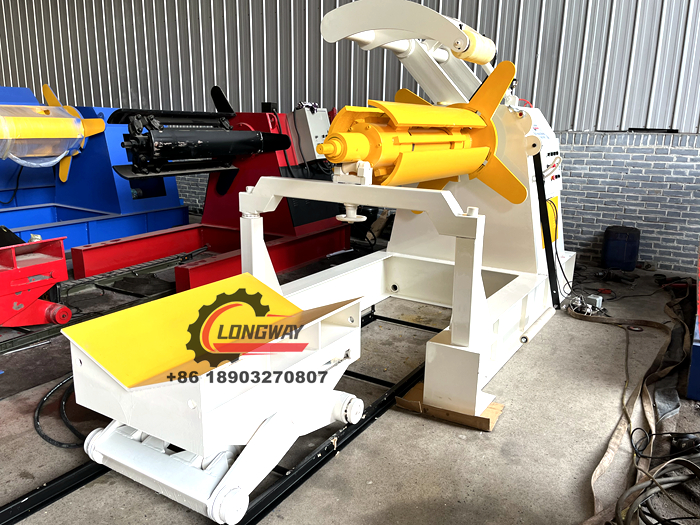Efficient Production of Corrugated Panels Using Roll Forming Technology
Corrugated Panel Roll Forming Machines Revolutionizing the Construction Industry
The construction industry has seen remarkable advancements in technology over the years, leading to increased efficiency, cost-effectiveness, and improved quality in building materials. One of the most significant innovations in this sector is the emergence of corrugated panel roll forming machines. These machines have transformed the way corrugated panels, which are widely used in roofing, walls, and various other applications, are produced.
Understanding Corrugated Panels
Corrugated panels are sheet metal products that have been formed into a wavy, ridged pattern. This design not only enhances their aesthetic appeal but also provides structural integrity and strength. Made from materials like steel, aluminum, or plastic, these panels are lightweight, durable, and resistant to various weather conditions. As a result, they are extensively utilized in industrial, commercial, and residential construction projects.
The Roll Forming Process
The roll forming process involves feeding a flat strip of metal into a system of rollers that progressively shape the metal into the desired profile. A corrugated panel roll forming machine is specifically designed to create the wavy profile characteristic of corrugated panels. This machine provides a continuous, efficient method for producing large quantities of panels with consistent quality.
The process begins with raw material, typically in coil form, that is unrolled and fed into the machine. As the material passes through a series of specially designed rollers, it is gradually shaped into the corrugated pattern. The precision of the roll forming process allows for exact control over the dimensions and profile of the finished product, ensuring uniformity and quality across each panel.
Benefits of Using Corrugated Panel Roll Forming Machines
1. Efficiency and Speed One of the primary advantages of roll forming machines is their ability to produce panels quickly. The continuous process allows for high-volume output, making it ideal for large construction projects where time is of the essence.
corrugated panel roll forming machine

2. Cost-Effectiveness By automating the production process, manufacturers can significantly reduce labor costs and minimize material waste. Additionally, the longevity and durability of corrugated panels mean they are a cost-effective choice over the life of a building.
3. Customization Corrugated panel roll forming machines can be easily customized to produce a variety of panel sizes and profiles. This flexibility allows manufacturers to meet the specific needs and preferences of their clients, offering a wide range of design options.
4. Quality Control The precision engineering of roll forming machines ensures that every panel produced meets strict quality standards. This reliability is crucial in the construction industry, where the structural integrity of materials is paramount.
5. Eco-Friendly Production Many modern roll forming machines are designed to minimize energy consumption and reduce waste. By using high-quality materials and technology, these machines support sustainable practices in the construction sector.
Applications of Corrugated Panels
Corrugated panels are versatile and can be used in various applications. They are commonly used in roofing systems due to their lightweight nature and resistance to weather elements. Additionally, these panels can be utilized for walls in industrial buildings, storage facilities, and even agricultural structures. Their durability and aesthetic appeal make them suitable for residential projects as well, providing an attractive and functional option for exterior cladding.
Conclusion
In conclusion, corrugated panel roll forming machines represent a significant advancement in construction technology. Their ability to efficiently produce high-quality, customizable panels has transformed many aspects of the industry. As construction demands continue to evolve, the role of roll forming machines will likely expand, offering innovative solutions that meet the needs of modern builders. The future of construction looks promising with these machines at the forefront, paving the way for cost-effective, sustainable, and aesthetically pleasing building solutions.
-
Roof Panel Machines: Buying Guide, Types, and PricingNewsJul.04, 2025
-
Purlin Machines: Types, Features, and Pricing GuideNewsJul.04, 2025
-
Metal Embossing Machines: Types, Applications, and Buying GuideNewsJul.04, 2025
-
Gutter Machines: Features, Types, and Cost BreakdownNewsJul.04, 2025
-
Cut to Length Line: Overview, Equipment, and Buying GuideNewsJul.04, 2025
-
Auto Stacker: Features, Applications, and Cost BreakdownNewsJul.04, 2025
-
Top Drywall Profile Machine Models for SaleNewsJun.05, 2025








